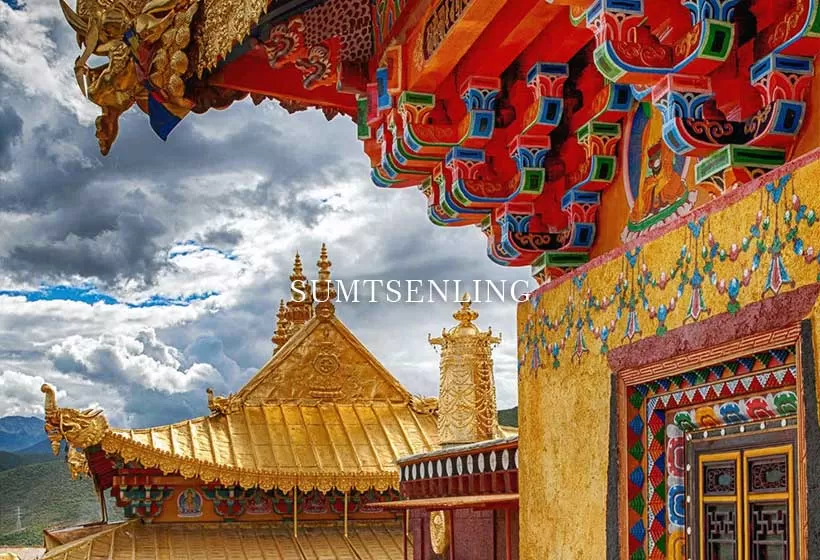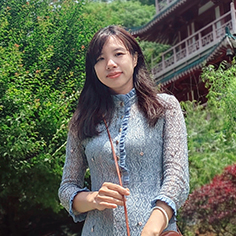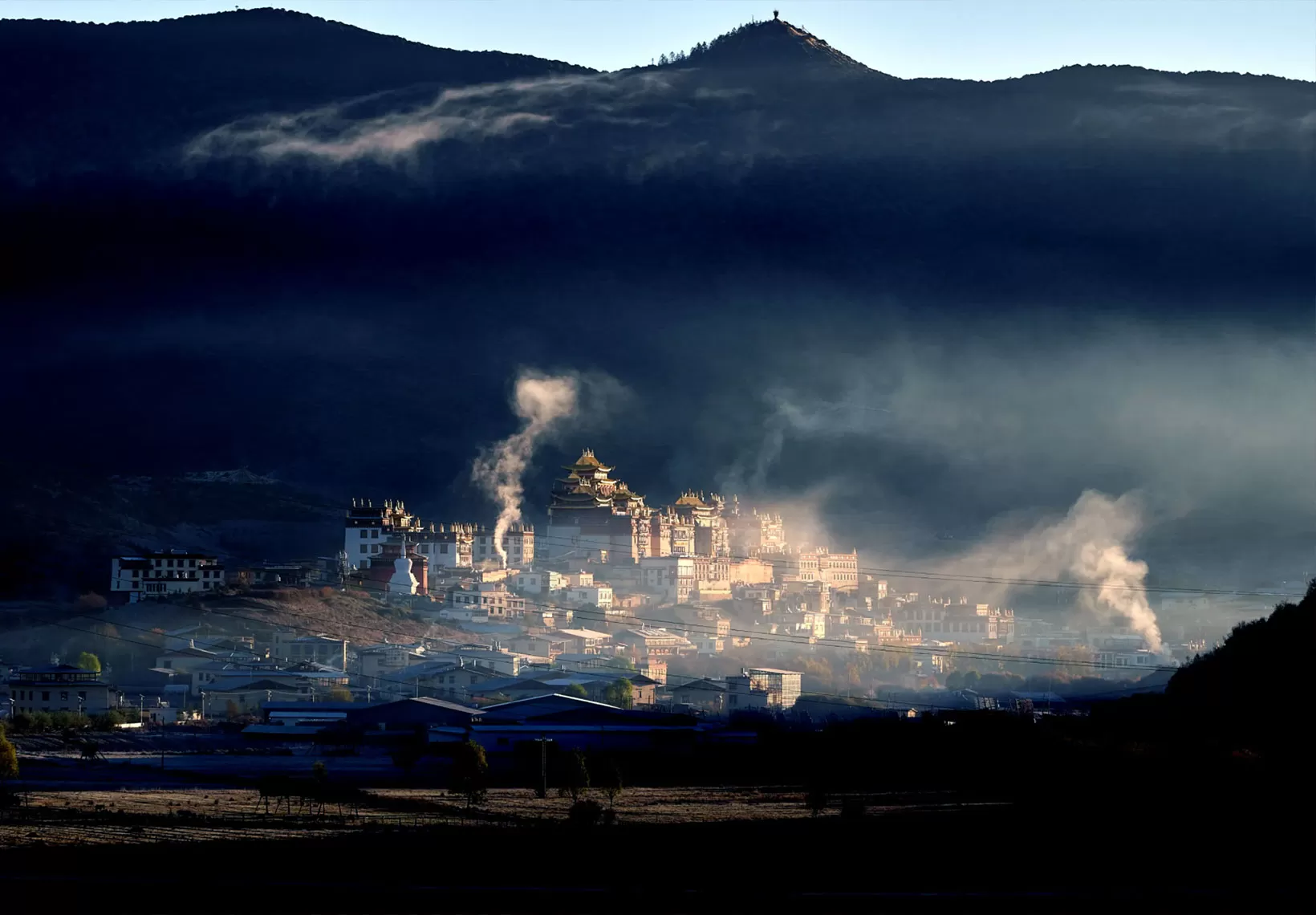Top Shangri- La tourist attractions and best sightseeing
Shangri-La is a beautiful place where three provinces converge, blending the cultural history and culinary traditions of multiple ethnic groups. It is a top destination for countless visitors, offering a pleasant climate, majestic mountains, meadows, snow-capped peaks, and ancient sites that draw people to return time and again. These unique and beautiful attractions, combined with the rich Tibetan cultural heritage, make Shangri-La a beloved destination for travelers.
- 1. The high altitude means stronger UV rays, so make sure to protect your skin from the sun.
- 2. Upon arrival at the high plateau, allow yourself time to acclimate to the environment. Avoid intense exercise and alcohol. After climbing snow-capped mountains, avoid taking a shower immediately to prevent altitude sickness.
- 3. There is a significant temperature difference between morning and evening, so dress warmly.
Tips: When enjoying the beautiful attractions in Shangri-La, keep the following points in mind:
Top 1: Ganden Sumtseling Monastery (Songzanlin Monastery)
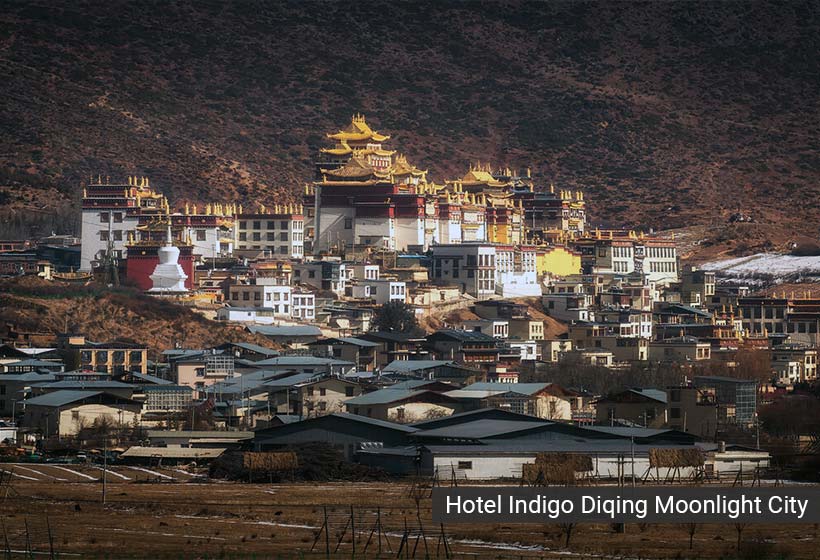 Songzanglin
SongzanglinThe largest Tibetan Buddhist monastery in Yunnan, A beautiful Tibetan monastery with colorful prayer flags and beautiful architecture. also known as the 'Little Potala Palace'.
Songzanlin Monastery, also known as Ganden Sumtseling Monastery, is one of the largest Tibetan Buddhist monasteries located in the Yunnan Province of China. The monastery is situated on a hillside in the town of Zhongdian (now renamed as Shangri-La), which is located in the northwest of Yunnan.
The monastery was founded in the 17th century by the Fifth Dalai Lama and is home to more than 700 monks. The complex includes several prayer halls, courtyards, and living quarters for the monks, and is known for its intricate architecture and stunning views of the surrounding mountains.
The main prayer hall, known as Zhacang, is the largest building in the monastery and is decorated with intricate frescoes and statues of Buddha and other Buddhist deities. Visitors can also explore the smaller prayer halls, which house numerous precious artifacts, including ancient texts, thangkas (Buddhist paintings on cloth), and sculptures.
Today, Songzanlin Monastery remains an important center for Tibetan Buddhism in China and attracts both pilgrims and tourists from around the world. Every year during the Gedong Festival, grand sacrificial ceremonies are held at Songzanlin.
Things to See: The Songzanlin Monastery is a sprawling complex with many temples, courtyards, and prayer halls. Some of the must-see sights include the main hall, the Golden Temple, and the Hall of the Wheel of Life. You can also take a guided tour to learn more about the history and significance of the monastery.
Tips: As a religious site, it is important to dress modestly when visiting Songzanlin Monastery. This means avoiding shorts, sleeveless shirts, and clothing that exposes too much skin. It's also a good idea to wear comfortable shoes, as there are many stairs and steep paths around the monastery.
Other Tips: When visiting Songzanlin Monastery, it's important to be respectful of the local culture and customs. This means refraining from taking photos or videos inside the temple halls, and avoiding loud or disruptive behavior. It's also a good idea to bring a small offering or donation to leave at one of the temple altars as a sign of respect.
- Address: in Shangri-La County, Diqing Tibetan Autonomous Prefecture, Yunnan Province.
- Open Hours: 08:00 Am—6:00 Pm
- Tour Length: 2-3 hours
Top 2: Dukezong Ancient Town
The Tibetan name "Dukezong" has two meanings: one is "castle built on stone," and the other is "moonlight city."
Dukezong is located in Shangri-La, the Diqing Tibetan Autonomous Prefecture of Yunnan Province. It is an ancient city built on Guishan Mountain and was a key point on the Tea Horse Ancient Road. With a history of over 1,300 years, it is the largest and best-preserved ancient architecture in the area, strongly influenced by Tibetan culture. Between 676 and 679 during the Tang Dynasty the Tubo people established Shengchuang on Guishan Mountain, later founding Dukezong City, which became known as the 'Iron Bridge East City.' In the Qing Dynasty, Dukezong became an important market for trade between Yunnan and Tibet.
Guishan Park was established during the reign of Emperor Kangxi. The Great Buddha Temple on the top of the mountain, a three-story Tibetan-style building that enshrines a gilded statue of Shakyamuni Buddha, modeled after the statue in Lhasa's Jokhang Temple. You will have a panoramic view of the Dukezong Ancient City when you reach the top of the temple.
At the summit of Guishan Mountain is the Giant Prayer Wheel, the largest of its kind in the world, standing 21 meters tall and weighing 65 tons. It typically takes seven to eight people to turn it. The exterior of the prayer wheel is adorned with carvings of spectacular landscapes such as snow-capped mountains, gorges, forests, meadows, and highland lakes, as well as the Eight Auspicious Symbols, which represent good fortune in Tibetan culture. The prayer wheel attracts countless visitors.
- Address: in Shangri-La County, Diqing Tibetan Autonomous Prefecture, Yunnan Province.
- Open Hours: 08:00 Am—6:30 Pm
- Tour Length: 2-3 hours
Top 3: Meili Snow Mountain
 Meili Snow Mountain
Meili Snow MountainOne of the most beautiful mountains in China, also known as the 'Prince of Snow Mountains'. There are total 13 mountain peaks, the main peak, Kawagebo, reaches an elevation of 6,740 meters and is the highest peak in Yunnan. The Meili Snow Mountains are one of the four sacred mountains in Tibetan Buddhism "The best time to view Meili Snow Mountain is from April to October."
Meili is located at the confluence of the Three Parallel Rivers, within the Jinsha River Great Bend Scenic Area, which is listed as a UNESCO World Natural Heritage site. The scenic area includes Mingyong Glacier, waterfalls, the Feilai Temple viewing platform, Moon Bay, Yubeng Scenic Area, and Wusongding.
Tips: Remember to keep warm and bring oxygen tanks. Meili Snow Mountain does not have a cable car; it can only be accessed by hiking.
- Address: in Deqin County, Diqing Tibetan Autonomous Prefecture, Yunnan Province.
- Open Hours: 08:00 Am—4:30 Pm
- Tour Length: 1-2 day
Top 4: Pudacuo National Park
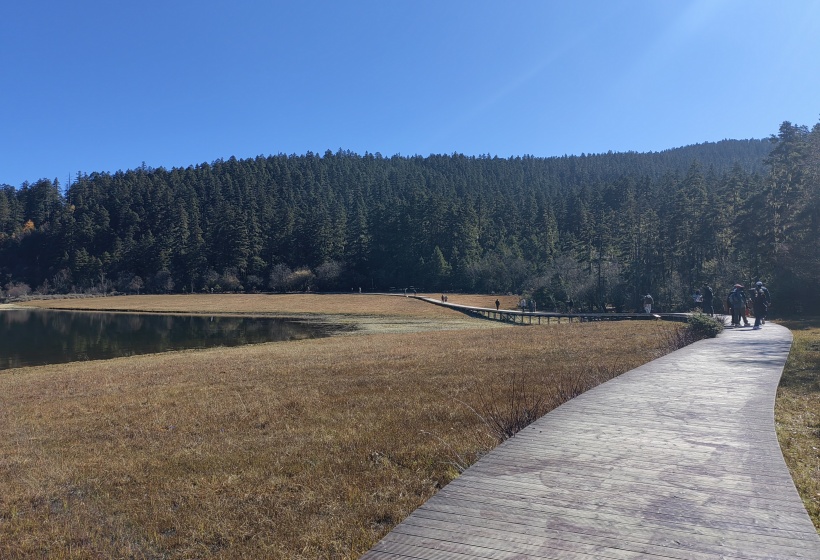 Pudacuo National Park
Pudacuo National ParkPudacuo National Park located at an altitude of 3500m to 4159m, is a 1300-square-kilometer national park in Shangri-La County.
A stunning natural park with crystal clear lakes, waterfalls, and a variety of flora and fauna. It is a nature reserve that combines lakes, forests, and meadows. On the vast grasslands, with clear blue lakes and lush green forests. Here, you can witness the most exquisite beauty of nature, as if a fairyland has fallen to earth.
The main attractions of Pudacuo are Shudu Lake, Bita Lake which is a beautiful alpine lake located in a high mountain valley, and Militang Pasture.- Address: Pudacuo Scenic Resort, East of Shangri-La, Shangri-La County, China.
- Open Hours: April to October: 08:00 Am~17:00 PM/ Nov to March: 08:00 Am ~16:00 PM
- Tour Length: 4-5 hours
Top 5: Napa Lake Nature Reserve
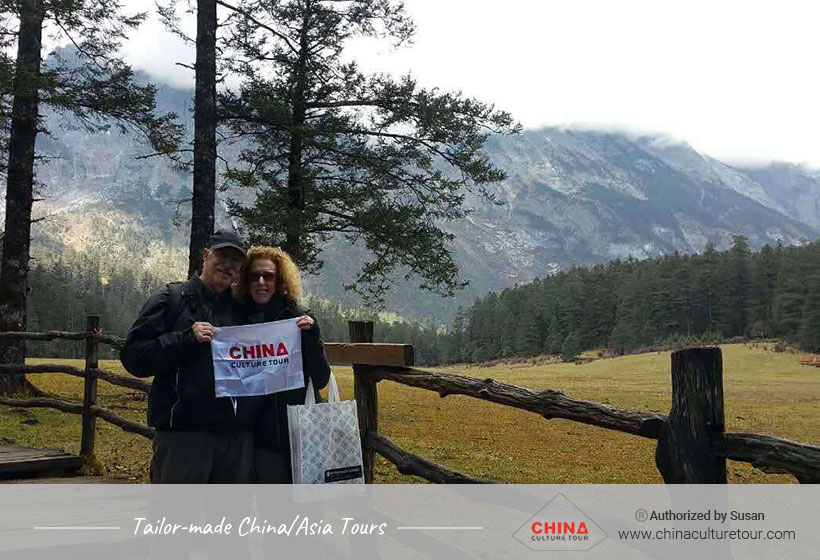 Napa Lake Nature Reserve
Napa Lake Nature ReserveIt is the largest grassland in the county. The snow-capped mountains, grasslands, and herds of cattle and sheep create a scenery reminiscent of the northern frontier in the southwestern region. It is a seasonal marsh wetland, an ecosystem where grassland wetlands and highland lakes coexist. During the wet season, it becomes Napa Lake, and during the dry season, it turns into Yila Grassland.
A picturesque wetland reserve with an abundance of bird species and beautiful landscapes. Napahai means “Behind the forest lies a highland lake”, a prairie lake with crystal-clear water, just like a mirror of the sky, Surrounding the lake is a beautiful grassland. A picturesque wetland reserve with an abundance of bird species and beautiful landscapes. Here, you can witness the most exquisite beauty of nature, as if a fairyland has fallen to earth.
- Address: in Shangri-La County, Diqing Tibetan Autonomous Prefecture, Yunnan Province.
- Open Hours: 08:00Am~6:00 PM
- Tour Length: 3-4 hours
Top 6: Baishuitai (White Water Terraces)
Baishuitai is a beautiful natural limestone terrace formed by mineral-rich hot springs water. Its layered white limestone steps glisten uniquely in the sunlight, resembling silver staircases that showcase the extraordinary craftsmanship of nature.
Baishuitai is situated at an altitude of approximately 2,380 meters and is one of the largest spring terraces in China. As early as the Tang and Song dynasties, Baishuitai became a renowned tourist destination in the western Yunnan region and is also considered one of the birthplaces of Naxi culture. The traditional craftsmanship of making Dongba paper and ink from the white stone in this area is well-preserved, making these items rare and valuable.
Every year on the 8th day of the second lunar month, local ethnic groups, including Tibetan, Naxi, Yi, Bai, and Lisu people, gather at Baishuitai to conduct religious rituals.
- Address: Baidi Village in Sanba Township, southeast of Shangri-La County, Yunnan.
- Open Hours: 08:30Am—5:30Pm
- Tour Length: 3-4 hours
Top 7: Haba Snow Mountain
A beautiful snow-capped mountain that is part of the Haba Mountain Range includes beautiful alpine forest, three meadows and beautiful alpine scenery.
The main peak of Haba Snow Mountain reaches an elevation of 5,396 meters and is one of the typical high-altitude mountain glaciers in modern maritime climates, making it the fourth highest peak in Yunnan Province. To the southeast is the main peak of Jade Gragon Snow Mountain, which rises to 5,596 meters and eastern boundary is the Tiger Leaping Gorge along the Jinsha River. The area features several picturesque lakes formed by glacial activity, including Hei Sea, Hai Sea, Huang Sea, and Shuang Hai. The snow mountain also provides important conditions for research on glaciers, fungi, animals and plants.
- Address: south east of Shangri-La County, Diqing Tibetan Autonomous Prefecture, Yunnan Province
- Open Hours: 09:00Am—5:30Pm
- Tour Length: 1 day
Top 8: Shangri-La Alpine Botanical Garden
A beautiful botanical garden located in a mountainous area with a variety of flowers and plants. Shangri-La Alpine Botancial Garden at an altitude of 3,260 meters, this is the highest botanical garden in the world. It covers about one-fifth of the area of the Summer Palace and protects approximately 1,000 species of higher plants. The garden features several plant species unique to the region named after Zhongdian, such as Zhongdian thorn rose and Zhongdian hawthorn, as well as some national key protected wild plants.
The botanical garden is not only a research base but also a scenic destination. It is divided into several zones based on the natural communities of plants such as the Yunnan tamarind tree, with different ecological environments. These zones include the coniferous area, the arboretum, the rock garden, and the greenhouse area.
- Address: in Shangri-La County, Diqing Tibetan Autonomous Prefecture, Yunnan Province.
- Open Hours: 08:30 AM – 05:00 PM
- Tour Length: 2–3 hours for a short visit; 1–3days for hiking
Top 9: Tiger Leaping Gorge
Tiger Leaping Gorge is one of the deepest gorges in China and it is also one of the most famous gorges in the world for its precipitous terrain. A place that one must hike at least once in your lifetime. It is renowned for its dramatic and rugged scenery. The gorge is situated on the upper reaches of the Jinsha River, with a total length of 17 kilometers and a winding road of 25 kilometers. After the river flows into the gorge, it narrows to just over 50 meters at its narrowest point, where a tiger or leopard could leap across, hence the name Tiger Leaping Gorge.
- Address: Approximately 106 kilometers (66 miles) from Shangri-La and about 86 kilometers (53 miles) north of Lijiang City
- Open Hours: 09:00 AM – 06:00 PM
- Tour Length: 2–3 hours for a short visit; 1–3days for hiking
- Travel Guide: attractions, seasons, hotels, food, itineraries, etc.
- Top destinations: places to visit in Shangri-La
- Travel itineraries: best itineraries for your reference
- Weather: the best time and seasons to visit Shangri-La
- Top attractions:well-selected top attractions in Shangri-La
- Shangri-La Culture: rich and unique
- Cultural immersions: hands-on activities to spotlight your trip
- Unique perspective: top different things to do
- Local food: what to eat while traveling in Shangri-La
- Luxury hotels: where to stay in Shangri-La
- Yunnan Tours: tailor-made Yunnan Tours for your reference
Customize Your Unique Yunnan Tour

If you are interested in one of the Yunnan itineraries mentioned above, please contact us, and we will be happy to customize it and provide a quote tailored to your preferences.
Alternatively, if you would like to customize your Yunnan Tour, please visit our Yunnan Tour Customized Center. We assure you that you will receive a reply within 24 working hours.
Informative Articles for Your Shangri-La Trip
 Pudacuo National Forest Park, Shangri La
Pudacuo National Forest Park, Shangri La
GREAT FAMILY CHINA TOUR
JULY 2024 We wanted to thank Grace at China Culture tour for organizing a great tour of China. We enjoyed our Beijing - Xian-Chengdu -Guilin -Yangshuo - Shanghai trip. Our local guides Bruce in Beijing, Susan in Xian, Jane in Chengdu, Mike in Guilin and Mary in Shanghai took care of us…read more details »
Teng Han L from SINGAPORE
Ready to Create a Unique Dream Travel?
